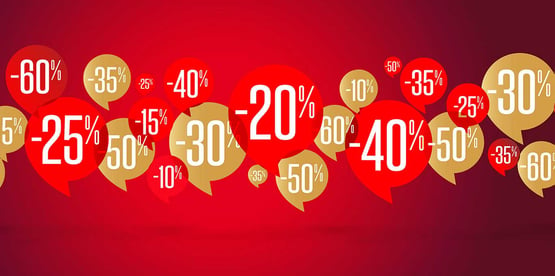Dynamic pricing within retail can bridge the e-gap

Dynamic Pricing Within Retail Can Bridge the E-gap
Some world leading e-commerce vendors change their product prices several million times per day, enabling them to adapt to an ever-changing marketplace.
Physical stores on the other hand, are often just beginning to explore the benefits of dynamic pricing. But it’s an important quest if we want to bridge the gap between physical and online retail that may either be critical for synchronizing prices between online and offline as well as competing effectively with purely online providers.
The good news for those stores who are just about to start their journey into dynamic pricing is that it does not require a lot of infrastructure investments.
And for those who have not yet invested in electronic shelf labels (ESLs), our friends at Revionics (now part of Aptos) have calculated that you may forego 35-40% of the profit uplift potential if you do not have ESLs implemented across your stores as you will not be able to change prices fast enough. (To understand the detailed reasons, you can watch the Pricer/Revionics webinar here.
ESLs are the foundation for dynamic pricing
Assuming that you do have ESLs of good quality you have most of what it takes hardware wise. The reason we stress that the electronic shelf labels should be of good quality is that they need to be able to handle multiple price changes per day plus any other of the myriad capabilities of an ESL such as supporting click and collect, advanced replenishment or geolocation capabilities. Oddly enough there are still labels being sold on the market that can only handle a small number of price changes per week, due to inferior technology and battery performance.
But with the technology in place, you are helped by establishing your objectives for using dynamic pricing. It could be everything from optimizing margins and integrating online/offline to responding to competitor actions or altering prices depending on time of day. More and more progressive retailers also use flexible pricing for objectives such as minimizing food waste in grocery stores.
Once you have set your objectives you need to work on updating and evolving your general pricing strategy and reflecting that across all your channels both online (e-commerce) and offline (in-store). But this is best done in concert with specialist and experienced dynamic pricing system providers such as Revionics.
Stay competitive
While this might take some effort, it is likely a journey you need to take, if you want to stay competitive in an integrated dynamic real-time marketplace and is certainly proving to be a key driver in the constant drive towards complete store digitalization.
Published: April 22, 2021